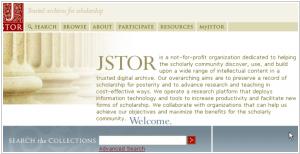EBSCO vs JSTOR
EBSCO and JSTOR are two popular online databases that offer access to academic journals, articles, and other scholarly resources. EBSCO is a comprehensive database that provides access to over 60,000 journals, magazines, and newspapers across various disciplines, including science, technology, humanities, and social sciences. It offers a range of features such as advanced search options, citation tools, and integration with reference management software. JSTOR, on the other hand, is a digital library that provides access to over 12 million academic journal articles, books, and primary sources in a variety of disciplines, including history, economics, and political science. It also offers a range of features such as citation tools, the ability to download articles and chapters, and a user-friendly interface.
8
EBSCO Information Services provides a complete and optimized research solution comprised of research databases, e-books and e-journals—all combined with the most powerful discovery service and management resources to support the information and collection development needs of libraries and other institutions and to maximize the search experience for researchers and other end users.
12
JSTOR is a digital library containing digitized back issues of academic journals, books and primary sources, and current issues of journals. It provides full-text searches of almost 2,000 journals. More than 8,000 institutions in more than 160 countries have access to JSTOR; most access is by subscription, but some older public domain content is freely available to anyone, and in 2012 JSTOR launched a program providing limited no-cost access to old articles for individual scholars and researchers who register.


